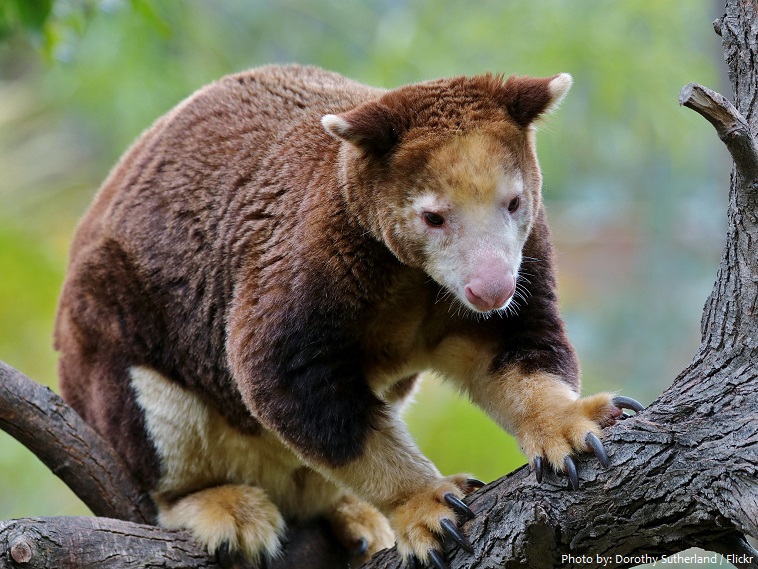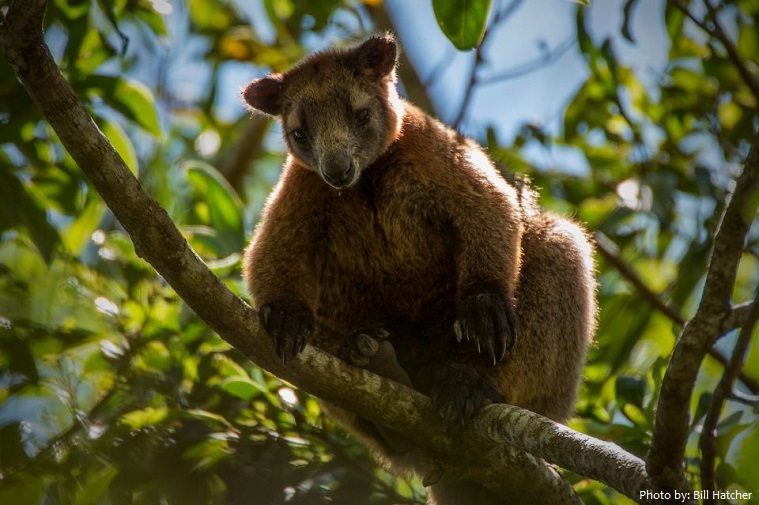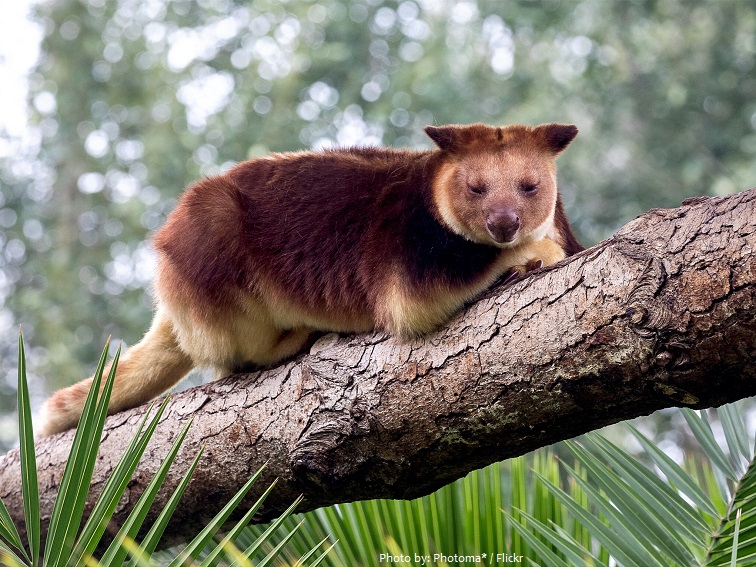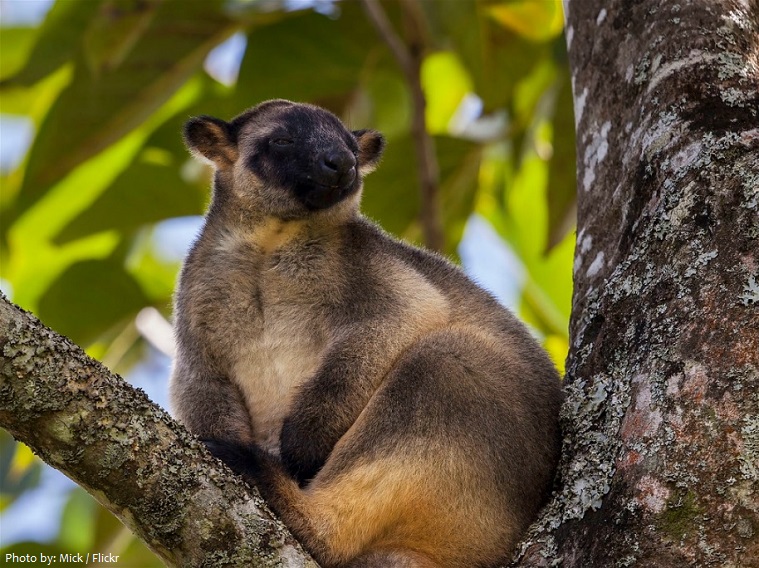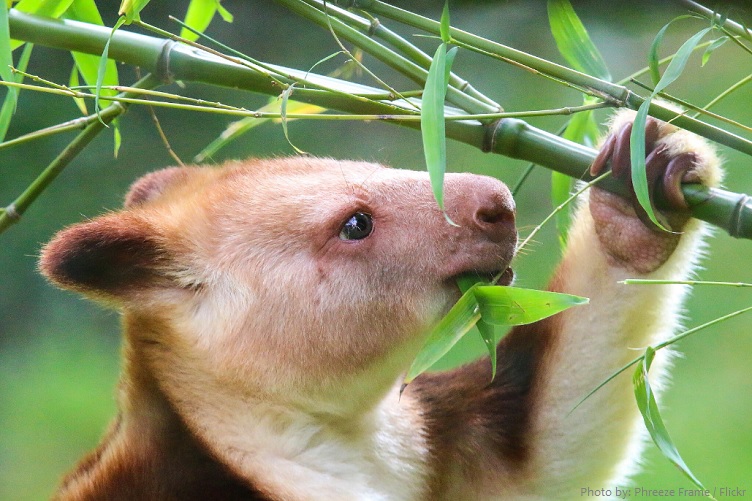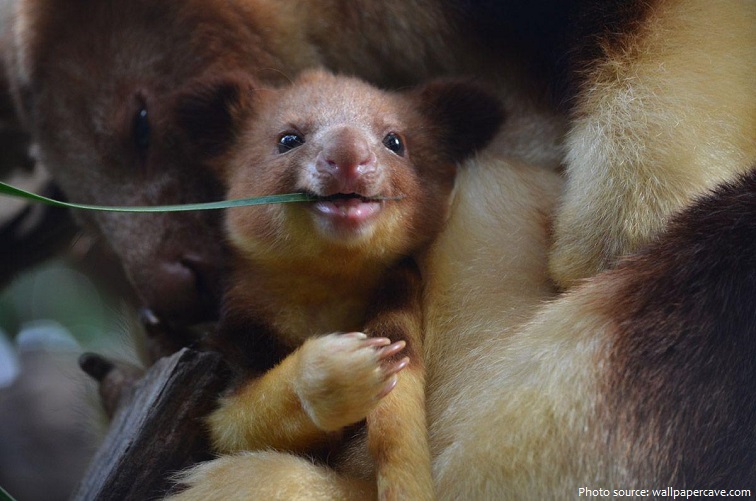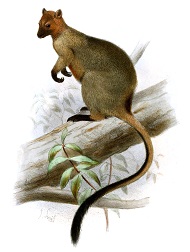Tree kangaroo are marsupials adapted for arboreal locomotion.
They are the only true arboreal macropods.
There are about 14 different species of tree kangaroo.
Tree kangaroos are found the tropical rainforests of New Guinea, far northeastern Australia, and some of the islands in the region.
Most species are live in mountainous areas, but several occur in lowlands.
The lifespan for tree kangaroos is from 6 to 15 years in the wild, and up to 27 in captivity.
The Lumholtz’s tree-kangaroo is the smallest of all tree kangaroos. Its body and head length ranges from 48 to 65 cm (19 to 25.5 in), and its tail from 60 to 74 cm (23.5 to 29 in), with males weighing an average of 7.2 kg (16 lb) and females 5.9 kg (13 lb).
The grizzled tree-kangaroo is one of the largest tree kangaroo species. This species grows to a length of 75 to 90 cm (29.5 to 35.5 in), with males being considerably larger than females, and its weight is 8 to 15 kg (18 to 33 lb).
Coloration is variable from tan to brown to gray to black, depending on the species.
Tree kangaroos have several adaptations to an arboreal life-style.
Compared to terrestrial kangaroos, tree kangaroos have longer and broader hind feet with longer, curved nails. They also have a sponge like grip on their paws and soles of their feet.
Tree kangaroos have a much larger and pendulous tail than terrestrial kangaroos, giving them enhanced balance while moving about the trees. Locomotion on the ground is by hopping, as with true kangaroos.
Like terrestrial kangaroos, tree kangaroos do not sweat to cool their bodies, rather, they lick their forearms and allow the moisture to evaporate in an adaptive form of behavioural thermoregulation.
Curly whorls on the tree kangaroo’s back fur let water run right off it.
In trees, these kangaroos are bold and agile. They climb by wrapping their forelimbs around the trunk of a tree and, while allowing the forelimbs to slide, hop up the tree using their powerful hind legs.
Tree kangaroos are excellent leapers – 9 metres (30 ft) downward jumps from one tree to another have been recorded and they have the extraordinary ability to jump to the ground from 18 metres (59 ft) or more without being hurt.
The main diet of the tree kangaroo is leaves and fruit that it gathers from the trees, but occasionally scavenged from the ground.
Tree kangaroos live solitary or in small family groups of usually just the mother, father and joey.
Despite spending about 60% of their time sleeping, tree kangaroos don’t build nests for slumber. They just sleep on whatever branch they feel safe in.
Tree kangaroos are marsupials so a majority of their physical development occurs in the mother’s pouch. Female tree kangaroos have a gestation period of 20 to 45 days. When the underdeveloped, kidney bean sized joey is born, it crawls into the pouch where it will latch onto a teat and continue to grow.
The joey remains in the pouch for about 8 to 9 months. After the infant initially leaves the pouch, it will continue to return to the pouch to nurse. This “in and out” phase lasts for one or two months. During the final phase, the young still nurses but never climbs completely into the pouch. Young tree kangaroos are weaned when they are approximately 13 months old. They stay with their mothers until they are about 18 months old, when they disperse and establish a home range.
The two most significant threats to tree-kangaroos are habitat loss and hunting. Tree kangaroo habitats are being destroyed or replaced by logging and timber production, along with coffee, rice and wheat production.
Tree kangaroos play an important role in the culture and diet of the indigenous people, and unsustainable hunting practices threaten the survival of tree kangaroos.
The Wondiwoi tree-kangaroo thought to be extinct until 2018.
